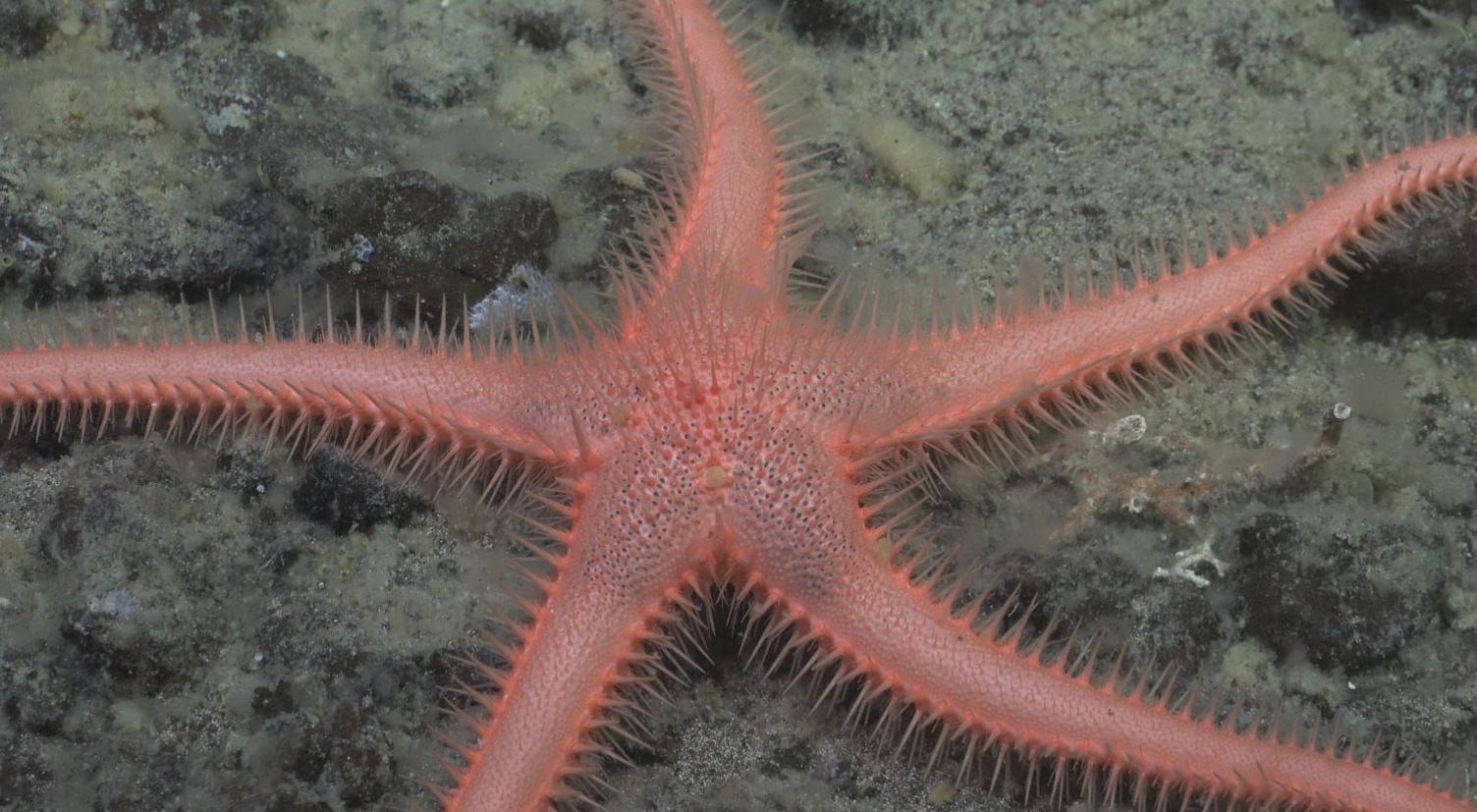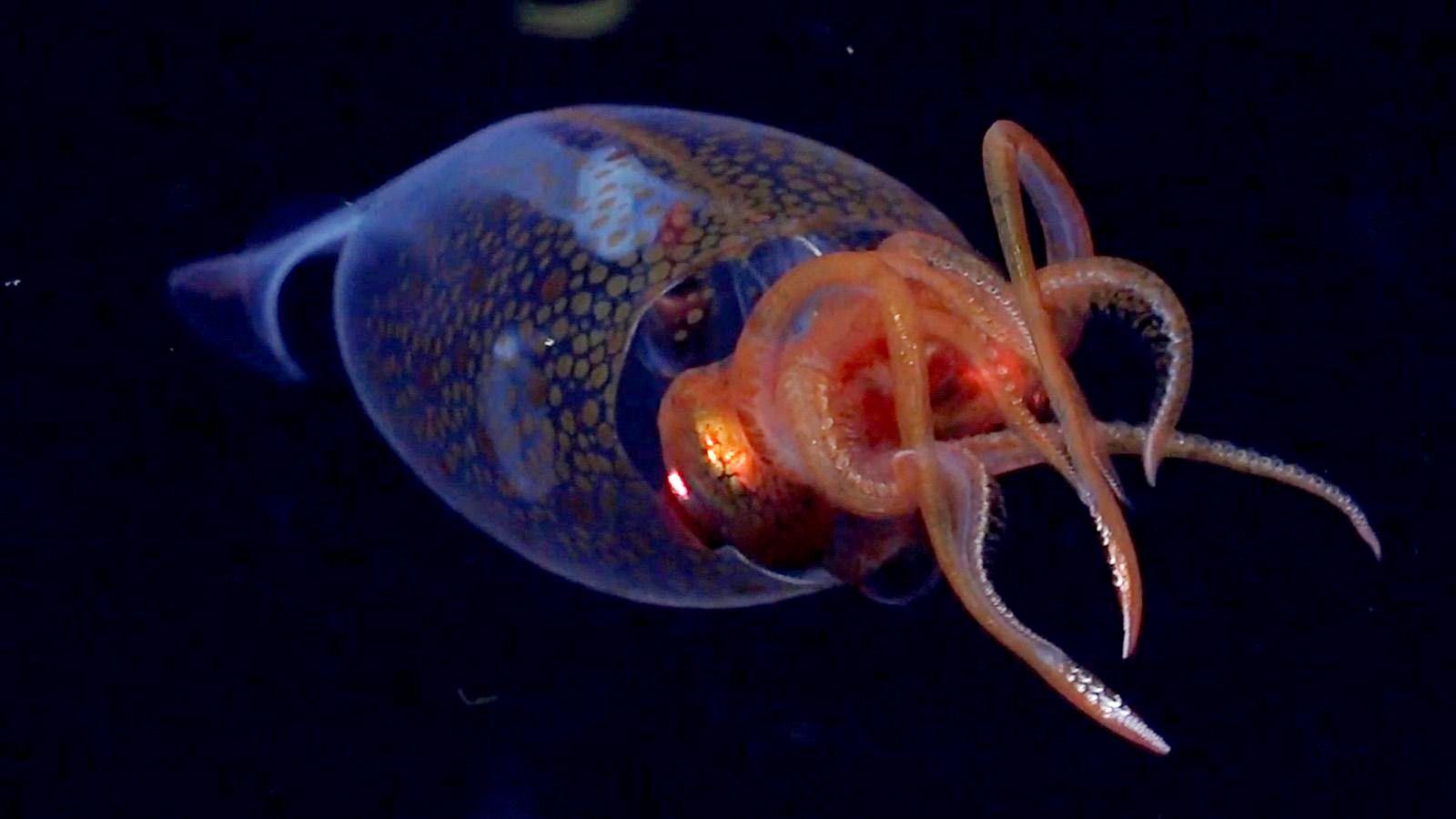Carnivorous 'death-ball' among odd deep-sea finds

The "death-ball" sponge was found in a trench some 3,600m (11,811ft) deep
- Published
A carnivorous "death-ball" sponge has been declared one of the oddest finds made during a deep-sea expedition near Antarctica.
The unusual creature was discovered 2.2 miles (3.5km) deep in a trench north of Montagu Island in the Southern Ocean.
It uses small hooks to catch and absorb its prey from the seabed and has strange appendages that end in orbs.
Dr Michelle Taylor, a University of Essex scientist who led the voyage, said: "If anything brushes up against them, they're doomed, unfortunately. Then to be absorbed slowly over time is a grim way of going."
Prey typically snagged by the deadly hooks include small crustaceans such as skeleton shrimp.
The Velcro-like attack mechanisms have made the carnivorous creature uniquely ruthless compared with the passive, filter-feeding behaviour of most sponges.
"What makes these sponges so different is they don't eat these inert particles and tiny chunks of other things that are dead, they're actually carnivorous, so they eat much higher up the food chain," Dr Taylor told the BBC.

A previously unknown species of sea star found at 3,631ft (1,107m) at the Mystery Ridge dive site
The discovery was made on research cruises near the South Sandwich Islands by The Nippon Foundation-Nekton Ocean Census and verified in August.
Dr Taylor said the species, which is part of the Chondrocladia genus, was illuminated at the front and had "a series of white stalks with white ping pong balls" on the end.
She added: "It's got this really unusual shape and it casts an incredible shadow into the background.
"It's a weird-looking animal, very strange indeed."
The death-ball name was coined by a sponge expert onboard the research ship, who felt it was apt given the creature's quirky danger.
Other new finds - of which there were 30 - included armoured and iridescent worms and a previously unknown species of sea stars.
They were made on one of two research cruises with Schmidt Ocean Institute in 2025 to find new marine life.
A colossal squid was filmed by the researchers during a separate expedition near Antarctica
Almost 2,000 specimens were collected during these trips in some of the most remote parts of the planet.
The researchers made international headlines in April when they filmed a colossal squid for the first time in 100 years.
The region they were operating in was so secluded that the nearest humans were hundreds of miles away on the International Space Station.
Dr Taylor said the Southern Ocean, also known as the Antarctic Ocean, "remains profoundly under-sampled".
She continued: "To date, we have only assessed under 30% of the samples collected from this expedition.
"So confirming 30 new species already shows how much biodiversity is still undocumented."
From blobfish to goblinshark: Why do deep ocean creatures look so weird?
Get in touch
Do you have a story suggestion for Essex?
Follow Essex news on BBC Sounds, Facebook, external, Instagram, external and X, external.
- Published16 April
